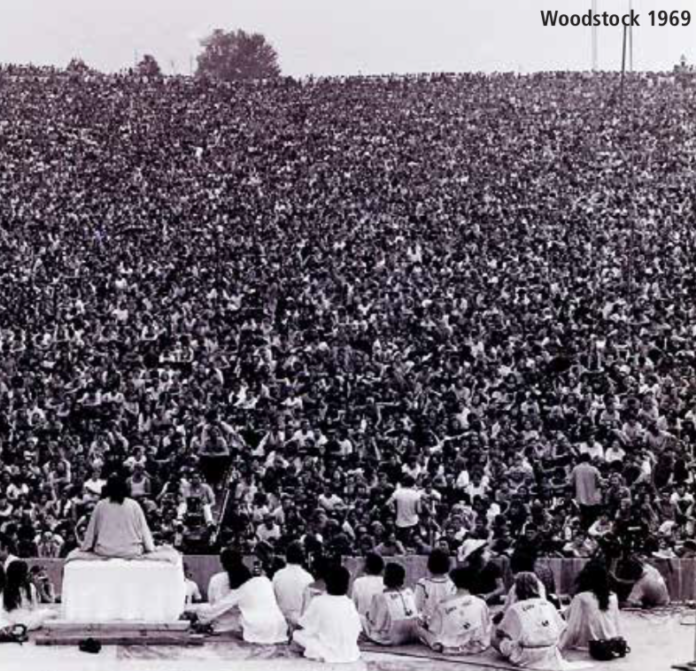In my lifetime, there was a deadly flu epidemic in the United States. The flu spread from Hong Kong to the United States, arriving in December 1968 and peaking a year later. It killed 100,000 people in the United States, mostly over the age of 65, and one million worldwide.
The average lifespan in the United States in those days was 70 years, whereas it is 78 today. The nation’s population was 200 million, and it is 328 million today. It was also a healthier population with low obesity. Extrapolating the death data based on population and demographics, we might be looking at a quarter-million deaths today. That flu was as deadly and scary as COVID-19, if not more so, though we shall have to wait to see.
H3N2 happened in the lifetime of every American over 52 years of age. I was five years old and have no memory of it at all. My mother vaguely remembers being careful and washing surfaces and encouraging her mom and dad to be careful. Otherwise, it’s mostly forgotten today. Why is that?
Life Went On
Nothing closed. Schools stayed open. All businesses did, too. You could go to the movies. You could go to bars and restaurants. The columnist John Fund has a friend who reports having attended a Grateful Dead concert. In fact, people have no memory or awareness that the famous Woodstock concert of August 1969—planned in January during the worse period of deaths— occurred during a deadly American flu pandemic that only peaked globally six months later. There was no thought given to the virus which, like ours today, was dangerous mainly to a non-concert-going demographic.
Stock markets didn’t crash. Congress passed no legislation. The Federal Reserve did nothing. Not a single governor acted to enforce social distancing, curve-flattening (even though hundreds of thousands of people were hospitalized), or banning of crowds. No mothers were arrested for taking their kids to other homes. No surfers were arrested. No daycare centers were shut, even though there were more infant deaths with this virus than the one we are experiencing now.
There were no suicides, no unemployment, no drug overdoses.
The media covered the pandemic, but it never became a big issue.
“In 1968-70, news outlets devoted cursory attention to the virus while training their lenses on other events such as the moon landing and the Vietnam War, and the cultural upheaval of the civil-rights movements, student protests and the sexual revolution,” Bojan Pancevski noted in The Wall Street Journal on April 24, 2020.
A Medical, Not Political, Problem
The only actions governments took were to collect data, watch and wait, encourage testing and vaccines, and so on. The medical community took the primary responsibility for disease mitigation, as one might expect. It was widely assumed that diseases require medical, not political responses.
It’s not as if our governments were unwilling to intervene in other matters. We had the Vietnam War, social welfare, public housing, urban renewal, and the rise of Medicare and Medicaid. We had a president swearing to cure all poverty, illiteracy, and disease. Government was as intrusive as it had ever been in history. But for some reason, there was no thought given to shutdowns.
Which raises the question: Why was this different? We will be trying to figure this one out for decades.
Was the difference that we have mass media invading our lives with endless notifications blowing up in our pockets? Was there some change in philosophy such that we now think government has authority over all aspects of life? Was there a political element here in that the media blew this wildly out of proportion as revenge against President Donald Trump and his “deplorables”? Did our excessive adoration of predictive modelling get out of control to the point that we let a physicist with ridiculous models frighten the world’s governments into violating the human rights of billions of people?
Maybe all of these were factors. Or maybe there is something darker and nefarious at work, as the conspiracy theorists would have it. Regardless, they all have some explaining to do.
Immunity by Way of Illness
By way of personal recollection, my own mother and father were part of a generation that believed they had developed sophisticated views of viruses. They understood that less-vulnerable people getting them not only strengthened those individuals’ immune systems but also contributed to disease mitigation by reaching “herd immunity.” They had a whole protocol to make a child feel better about being sick. I got a “sick toy,” unlimited ice cream, Vicks rub on my chest, a humidifier in my room, and so on.
My parents congratulated me on building immunity and encouraged me to take my illnesses in stride while doing their best to get me through them.
If we used government lockdowns then like we use them now, Woodstock (which changed music forever and still resonates today) would never have occurred. How much prosperity, culture, and tech has the nation lost in this calamity?
What happened between then and now? Was there some kind of lost knowledge, as happened with scurvy, which we understood how to beat when it was necessary but lost sight of when it was no longer a threat? For COVID-19, we reverted to medieval-style understandings and policies, here in the 21st century. It’s all very strange.
The contrast between 1968 and 2020 couldn’t be more striking. They were smart. We are idiots. Or at least our governments are.
Jeffrey A. Tucker (jeffrey.a.tucker@gmail.com) is editorial director of the American Institute for Economic Research. An earlier version of this article was published at AIER.org. Reprinted with permission.




















